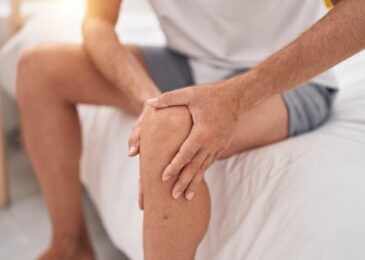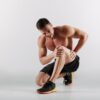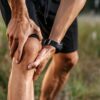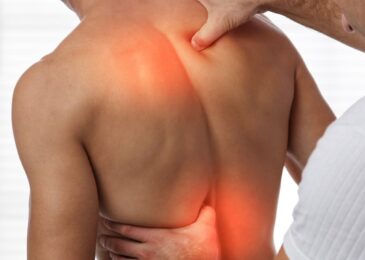
Pain in Tendon behind Knee is another types of a very hard pain you can ever be met. Your knee is your body’s biggest joint and its most injury-prone areas.
It is made of bones that help you to move out of joint. Some knee injuries heal on their own with rest and care. And others require surgery or other medical interventions. In other cases, pain is a sign of chronic condition like arthritis that damages the knee gradually.
Pain in Tendon behind Knee Main points:
Here we will cover the following headlines to give you the full guide about the pain in Tendon behind Knee
- Pain in Tendon behind Knee Causes.
- Leg cramps
- Jumper’s knee
- Biceps femoris tendonitis
- Baker’s cyst
- Gastrocnemius tendonitis.
- Meniscus Tear.
- Anterior cruciate ligament injury.
- Posterior cruciate ligament
- Chondromalacia
- Deep vein thrombosis.
- Tips for relief.
- Cases to see the doctor
Here are some causes of Pain in Tendon behind Knee which are responsible for the pain in the back of your knee.
Pain in Tendon behind Knee Causes:
Here are some causes of Pain in Tendon behind Knee�which are responsible for the pain in the back of your knee.
Leg cramps
The leg cramps are the first cause of the pain in Tendon behind Knee. Cramp is the muscles tightening. There are muscles in the back of the thigh near the knee. The cramp happens when you exercise or during pregnancy, there are other possible causes:
- Nerve problems in your leg
- Dehydration
- Tetanus
- Toxins
- Liver disease
When you got a cramp you feel your muscles spasm. The pain lasts for a few seconds and in other cases lasts for 10 minutes or maybe for hours
Jumper’s knee:
It is an injury to the tendon the cord that connects your kneecap to your shinbone, also called patellar tendonitis. It happens when you jump or change direction like when you play volleyball or basketball. These movements cause the tear in the tendon. There are some symptoms like:
- Weakness
- Stiffness
- Trouble bending and straightening your knee
- Keep
Biceps femoris tendonitis:
There are three muscles in the hamstring which cause the pain in the tendon behind the knee in other words ” Pain in Tendon behind knee”
- Semitendinosus muscles
- Semimembranosus muscles
- Biceps femoris muscle
These muscles help you to bend your knee. Any injury to these muscles is called pulled hamstring strain. This happens when the muscle is stretched too far. Sometimes the muscle can be completely torn, that takes months to heal.
There are some symptoms of
- Swelling
- Bruising
- Weakness in the back of your leg
This injury is very common in athletes.
Baker’s cyst
It is a fluid-filled sac that forms behind the knee. This fluid performs as a lubricant for the knee joint. When you suffer from the knee injury, your knee may produce too much synovial fluid. The more fluid buildup or forms a cyst.
Some symptoms like
- Pain in and behind your knee
- Swelling of your knee
- Stiffness in your knee
These symptoms may be worse when you don’t take a rest.
Gastrocnemius tendonitis
These muscles make up your calf which is the back of the lower leg. These muscles help you to bend your knee and point your toes. Tennis or squash require to quickly going from a standing position to run, this stains the gastrocnemius muscle. Other symptoms like
- Pain in the calf
- Bruise in the calf
- Difficult to stand on tiptoe
- Meniscus Tear
It is a wedge-shaped piece of cartilage that cushions and stabilizes your knee joint. Each knee has two menisci one is in the left and another in the right.
When you get older your meniscus weakness and degenerate and is more likely to tear with any twisting motion.
Other symptoms
- The stiffness of the knee
- Swelling
- Weakness
Locking or giving the way of the knee
Anterior cruciate ligament injury
It is a band of tissues that runs through the front of your knee joint. On the other hand, It responsible to connect thighbone to your shinbone and helps to stabilize the movement to your knee
ACL injury usually happens when you slow down, stop, or change direction suddenly while you are running.
Posterior cruciate ligament
PCL is the ACL’s partner. It is another band of tissues. Also, The PCL connects your thighbone to the shinbone. It happens when you take a hard blow to the front of your knee like the car accident.
PCL causes
- Swelling of the knee
- Stiffness
- Hard to walk
Chondromalacia:
It happens when the cartilage inside a joint breaks down. This cartilage is the rubbery material that cushions bones so they can’t scrape against one another while movement
The main symptom is a dull ache in the back of the knee. You feel worse while climbing the stairs. Other symptoms
- Trouble in moving the knee
- Buckling of the knee
- Arthritis
It is a degenerative disease in which the cartilage that cushions and supports the knee joint gradually wears away.
Deep vein thrombosis
DVT is a blood clot which forms in a deep vein inside the leg. You feel pain especially when you stand up
- The Deep Vein Thrombosis Symptoms:
- Swelling of the leg
- Warmth in the knee
- Red skin
Tips for relieving the pain in Tendon behind Knee:
In the pain in Tendon behind Knee. There are some basic and important Tips for relieving the pain in Tendon behind Knee you need to follow.
- Take a rest until you knee heals
- Hold ice for 20 minutes for several times during the day
- Wear compression bandage to support the knee
- Elevate your knee on the pillow
- Try to use crutches to take the weight off the knee
- Take some medicine for pain relief as aspirin, buffering and Naprosyn
Try to follow the above tips exactly to get the best result.
Cases to see the doctor in the pain in Tendon behind Knee:
There are some cases in the pain in Tendon behind Knee if you face any of the following cases you need to visit the doctor as fast as possible.
- Severe pain
- Sudden swelling or warmth in the leg
- Trouble breathing
- Changes in the appearance of the knee
Hope the Above Guide was useful For You and Hope to you all health and Happiness.





